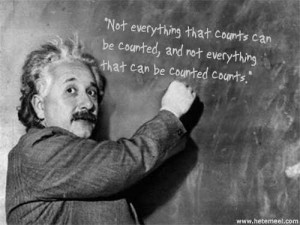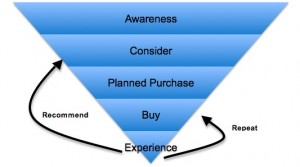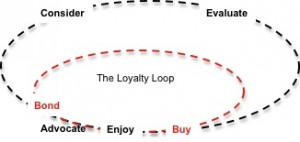My group consisted of Victor Tang, Deepak Kumar, Michael Chernets, Polina Latvina and I. Our eMarketing presentation was to Regency Auto Group. The focus of our presentation was on improving the whole Group’s online presence as well as some specifics for the increasing test drives of the Nissan Leaf.
One of the challenges in developing a campaign for the Leaf was that Regency Auto Group operates dealerships for several different manufacturers including: Nissan, Toyota, Lexus, Volkswagen, Scion and Infiniti. This restricted our strategy as comparing the Leaf to other similar vehicles such as the Prius V5 from Toyota may harm the group as a whole.
My area of focus for the presentation was on listening tools and engaging with creators to support the development of user generated content. As the Nissan Leaf is a new vehicle using breakthrough technology, significant barriers to adoption exist. So the overall goal of the campaign is to use user generated content to overcome some of the barriers to adoption.
The first thing that I researched were listening tools. This included Google Alerts and Social Mention. My research included exploring what keywords and listening tools work best. Although both Google Alerts and Social Mention search a variety of information sources, it was my experience that Google Alerts worked best for news and Social Mention worked best for blogs, Twitter and YouTube. Another important factor was which words were used as keywords. For example I found that with using the keywords “environment Vancouver” yielded few good results as to what was going on with regards to the environmentally conscious community in Vancouver but “green Vancouver” was very effective. Different keywords can be used for different purposes some can tap into some of the lifestyle activities of a target market or it can simply monitor competitors, brands, products and trends. When looking to identify key influencers, listening tools can help a marketer discover where discussions are taking place, who are the influencers, what are their needs and what types of content encourages discussions.
One thing that I have found particularly challenging throughout the MBA is to effectively segment by psychographics. However, social media listening tools make it significantly easier. I learned that I can search a product or category and try to identify what types of people are talking about the product and then based on other conversations that they are having, I can better segment them.
The other key thing that I learned in my research for the Nissan Leaf campaign was how social media and user generated content can overcome barriers to adoption. Presently, the barriers to adoption for the Nissan Leaf include:
- Familiarity with the technology
- Range that the vehicle can travel
- Charging options for the vehicle
- Price of the vehicle
Currently, there are two local bloggers that own Nissan Leafs and are posting content about their experiences with the vehicle. This content helps increase adoption rates because it shows consumers using the Leaf in their everyday lives. This increases the familiarity with the product, and alleviates concerns over the range of the vehicle and charging. Since a lot of the concerns for the price of the vehicle are due to it being viewed as an “occasional vehicle,” the content of consumers using the Leaf in their everyday lives also helps to justify the price.
Throughout the module I have focused my readings on measurement, as it is one of the areas that I struggle with in marketing communication. Going forward as I review all that I have learned in the MBA, I will continue to connect how best to measure the value of social media. Overall, working with a client for the eMarketing project was a great way to apply some of class material and as I result I have a better understanding of how an organization can use social media to achieve different objectives




